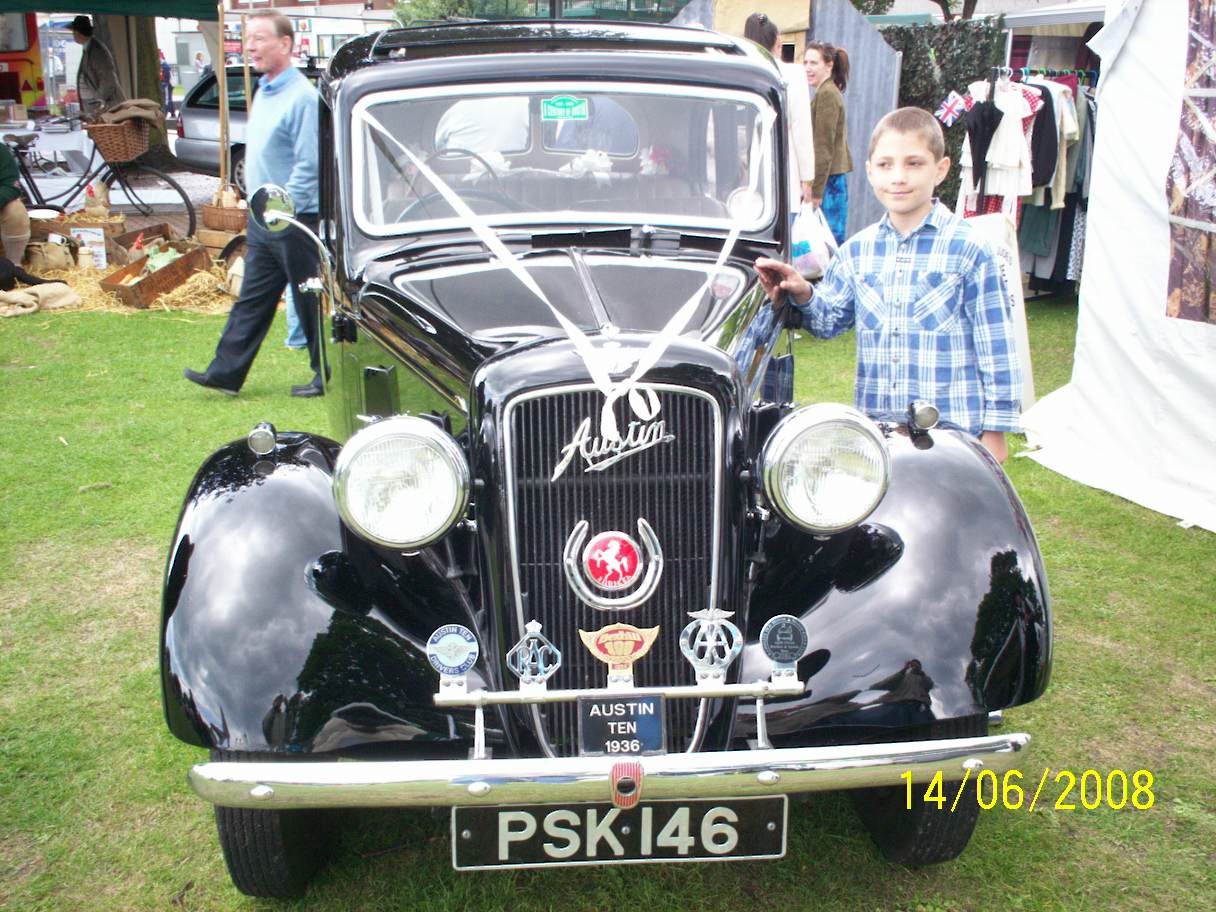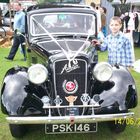2. Welt Krieg Escort Fahrzeug: 1936 Austin Ten
Dieser noch sehr gut erhaltener Wagen fuhr ca. 100Km schnell, hatte eine 12v Batterie , kostete damals ca. £170. (Umgerechnet 200€).
Diese Aufnahme stammt aus der alljährlich im Monat Juni statfindende Dover Militäry Fair. Hier werden auch viele andere altersgenossen wieder mal gut poliert zur Schau vorgestellt. Es sind auch echte Panzer, Kriegswaffen, Geräte zu bestaunen.
The Austin 10 was a small car made by the Austin Motor Company. It was launched in 1932 and was Austin's best selling car in the 1930s and continued in production, with upgrades, until 1947. It fitted in between the "baby" Austin 7 which had been introduced in 1922 and the Austin 12 hp which had been updated in 1931.
The design of the car was conservative with a pressed steel body built on a cross braced chassis. The chassis was bought in and was designed to give a low overall height to the car by dipping down by 2.75 inches (70 mm) between the axles. The 1125-cc four-cylinder side-valve engine producing 21 bhp (16 kW) drove the rear wheels through a four-speed gearbox and open drive shaft to a live rear axle. Suspension was by half-elliptic springs all round and the brakes were cable operated. The electrical system was 6 volt. For the first year only, a four-door saloon was made in two versions. The basic model cost £155 and was capable of reaching 55 mph (89 km/h) with an economy of 34 mpg; it was rapidly followed by the Sunshine or De-Luxe with opening roof and leather upholstery at £168.
1933 saw the saloons joined by an open two-seater or "Open Road" tourer, a "Colwyn" cabriolet and a van. A sports model, the 65 mph (105 km/h), 30 bhp (22 kW) "Ripley" joined the range in 1934. Mechanical upgrades for 1934 included a stronger chassis, synchromesh on the top two gears and 12-volt electrics.
The first styling change came in late 1934 with a change to the radiator when the plated surround or cowl was replaced by one painted in body colour and it was given a slight slope. Synchromesh was added to second gear and "semaphore" type indicators were standardised. The saloon was given the name "Lichfield" and got a protruding boot which enclosed the spare wheel.
A new body style was added in 1936 with the six light (three windows down each side, with one behind the rear door) "Sherbourne" but the big change came in 1937 with the almost streamlined "Cambridge" saloon and "Conway" cabriolet. Other changes included Girling rod brakes, 16-inch steel disc wheels replaced the 19-inch wires and more room for passengers by moving the engine forwards by 4 inches (100 mm). Top speed rose to 60 mph (97 km/h). These changes did not appear on the open cars, which no longer included the Ripley sports, until 1938 when all cars also gained an aluminium cylinder head on the engine.











Comments 0
Delete comment
Delete comments and replies